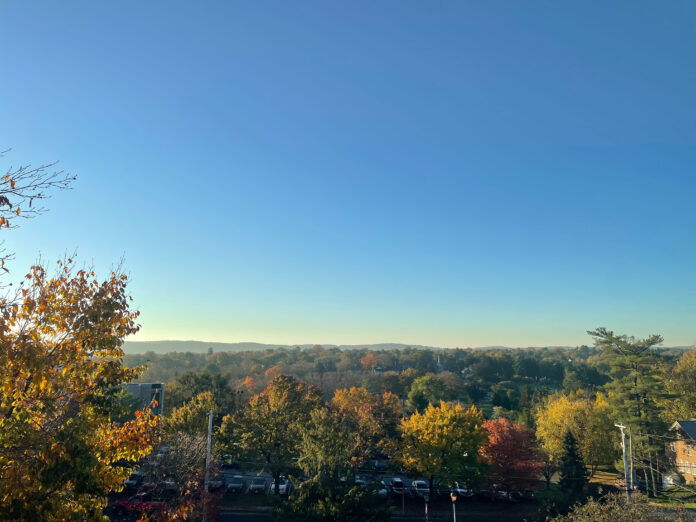On Feb. 9, seniors gathered in the Event Space to celebrate (or mourn, depending on your post-grad plans) 100 days until Muhlenberg’s 175th commencement ceremony. Students were greeted with bracelet-sanctioned White Claws, blaring 2000’s music and catered chips and dip. The stage was set for the class of 2023 to have a cheesy but fun-filled evening. Then, at 8:47 p.m., everyone got a text message. Thinking it was their crush confessing their love and making Valentine’s Day plans for next week, students eagerly checked their phones and read “Shelter in Place – Shots Fired Near Campus.”
Naturally, this was deeply disturbing and frightening to many students, caused significant emotional distress and was an ultimate vibe-kill; especially considering that the good feelings were riding high that day due to abnormally nice weather. In Allentown, the temperature had peaked at around 60 degrees—the highest it had been up until this point in the semester—which, paired with sunshine, made for many impromptu frisbee games and a crowded Parent’s Plaza.
Recent research done by the Boston University School of Public Health and the University of Washington School of Social Work has uncovered a concerning link between warm weather and an increase in gun violence. A study published in the Journal of the American Medical Association last year concluded that when the temperature rises, so does the likelihood of gun-related incidents. This comprehensive study reveals that nearly seven percent of shootings are correlated with above-average daily temperatures, even after adjusting for seasonal patterns. The research team examined the temperatures and over 116,000 shootings that occurred between 2015 and 2020 in the top 100 U.S. cities with the most assault-related shootings. They took into account seasonal changes and differences in climate across regions and discovered that 7,973 shootings could be correlated with temperatures that were higher than average.
The findings indicate that the Northeast and Midwest regions experience the biggest increases in gun violence on hotter-than-normal days due to more significant variations in temperature, even during the same season, or because the cities in those regions are less accustomed to hot weather. These regions are also more racially segregated than other areas of the country. The study’s findings should be interpreted within the context of structural racism and racial inequities in exposure to gun violence and heat as well as compounding effects of climate change on average temperatures. In an interview with the BU School of Public Health, lead researcher Dr. Jay Lyons acknowledged that this issue is “part racial justice, part climate change mitigation and part gun violence prevention.”
In a country where over three-quarters of people drive a car to work and it’s easier to legally buy a gun than it is to legally become a citizen, it’s evident that there are a number of societal and political issues that are manifesting into both concerns of rapid anthropogenic climate change and the cultivation of gun violence within the U.S. The first step, irrespective of the link to increased shootings, should be building a sustainable and equitable infrastructure with strong investments in green energy, job training in sustainable sectors and more robust public transportation programs. This helps mitigate the number of days in which cities are experiencing above-average temperatures. But gun violence ultimately comes down to making guns harder to buy, sell and own. Enacting policies that incorporate mental health benchmarks for gun buyers, banning assault weapons and strengthening communities in which gun violence is most likely to occur will be much more effective in reducing these incidents.
While the link between warm weather and gun violence may be unsettling, it is important to note that there are steps individuals can take to uplift their communities to reduce gun violence. It’s important to address the root causes of gun violence, such as poverty, inequality, and mental health issues by pushing local and federal policymakers to act on gun control, tackling structural issues facing communities and sharing resources that seek to alleviate these underlying problems. By working together to address this complex issue, we can help ensure that all Americans are able to live in safe and healthy communities, regardless of the weather outside.
Sources:






















